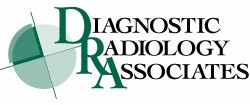 3 –D mammography is the latest improvement in imaging to detect breast cancer. Conventional 2-D mammography produces pictures in which an X-ray passes through the breast along a single line, giving an image in which all of the breast structures along that line are overlapped with each other. This overlap is not much of an issue in a breast composed mostly of fat, because fat is relatively “clear” to X-rays, so that an underlying breast cancer is usually easily seen through the fat. However, it is a different situation when the patient’s breast is dense, containing a lot of normal breast glandular tissue. The X-ray can’t see as well through this dense tissue, and an underlying breast cancer becomes difficult to see, like “looking for a polar bear in a snowstorm.”
3-D mammography takes X-ray pictures of the breast from many different angles, not just along a single line. Using this multi-angle information, computer processing allows formation of many thin slice pictures through the breast, minimizing the problem of overlapping, superimposed density. By looking through these slice pictures, it is easier for the radiologist to detect a cancer that might otherwise have been obscured by normal dense tissue. This results in about 40% better sensitivity in detecting invasive cancers for 3-D compared with 2-D mammography. In addition, 3-D mammography results in fewer “false alarms.” For example, 2-D mammography may have suggested a suspicious opacity that would have necessitated a call-back for additional imaging, but 3-D mammography may be able to show that the same opacity is just overlapping normal glandular tissue, so that no call-back is needed. The patient experience for the 3-D mammography procedure is virtually the same as for conventional 2-D mammography.
3 –D mammography is the latest improvement in imaging to detect breast cancer. Conventional 2-D mammography produces pictures in which an X-ray passes through the breast along a single line, giving an image in which all of the breast structures along that line are overlapped with each other. This overlap is not much of an issue in a breast composed mostly of fat, because fat is relatively “clear” to X-rays, so that an underlying breast cancer is usually easily seen through the fat. However, it is a different situation when the patient’s breast is dense, containing a lot of normal breast glandular tissue. The X-ray can’t see as well through this dense tissue, and an underlying breast cancer becomes difficult to see, like “looking for a polar bear in a snowstorm.”
3-D mammography takes X-ray pictures of the breast from many different angles, not just along a single line. Using this multi-angle information, computer processing allows formation of many thin slice pictures through the breast, minimizing the problem of overlapping, superimposed density. By looking through these slice pictures, it is easier for the radiologist to detect a cancer that might otherwise have been obscured by normal dense tissue. This results in about 40% better sensitivity in detecting invasive cancers for 3-D compared with 2-D mammography. In addition, 3-D mammography results in fewer “false alarms.” For example, 2-D mammography may have suggested a suspicious opacity that would have necessitated a call-back for additional imaging, but 3-D mammography may be able to show that the same opacity is just overlapping normal glandular tissue, so that no call-back is needed. The patient experience for the 3-D mammography procedure is virtually the same as for conventional 2-D mammography.
Locations
WaterburySouthbury

 Breast ultrasound (us) is an extension of the physical exam: instead of placing one’s hands on an organ or mass to feel it, the US probe (transducer) is placed on the skin over the breast making an image of it by bouncing ultra sound waves off the surface of the anatomy and receiving the reflected waves which are processed by a computer into a picture. Gel is applied to the skin to exclude air from the transducer-skin interface since US waves do not pass through air. The closer we can place the US transducer to the anatomy, the better we can see it, which is why superficial organs like the breast and thyroid are well visualized. US has some special properties which make it well-suited to differentiate solid from fluid filled structures such as tumors from cysts. US waves also travel well through dense tissue unlike X-rays which is why it is a good compliment to mammography in which dense breast tissue may obscure a mass. To learn more about breast density and what it means go to
Breast ultrasound (us) is an extension of the physical exam: instead of placing one’s hands on an organ or mass to feel it, the US probe (transducer) is placed on the skin over the breast making an image of it by bouncing ultra sound waves off the surface of the anatomy and receiving the reflected waves which are processed by a computer into a picture. Gel is applied to the skin to exclude air from the transducer-skin interface since US waves do not pass through air. The closer we can place the US transducer to the anatomy, the better we can see it, which is why superficial organs like the breast and thyroid are well visualized. US has some special properties which make it well-suited to differentiate solid from fluid filled structures such as tumors from cysts. US waves also travel well through dense tissue unlike X-rays which is why it is a good compliment to mammography in which dense breast tissue may obscure a mass. To learn more about breast density and what it means go to